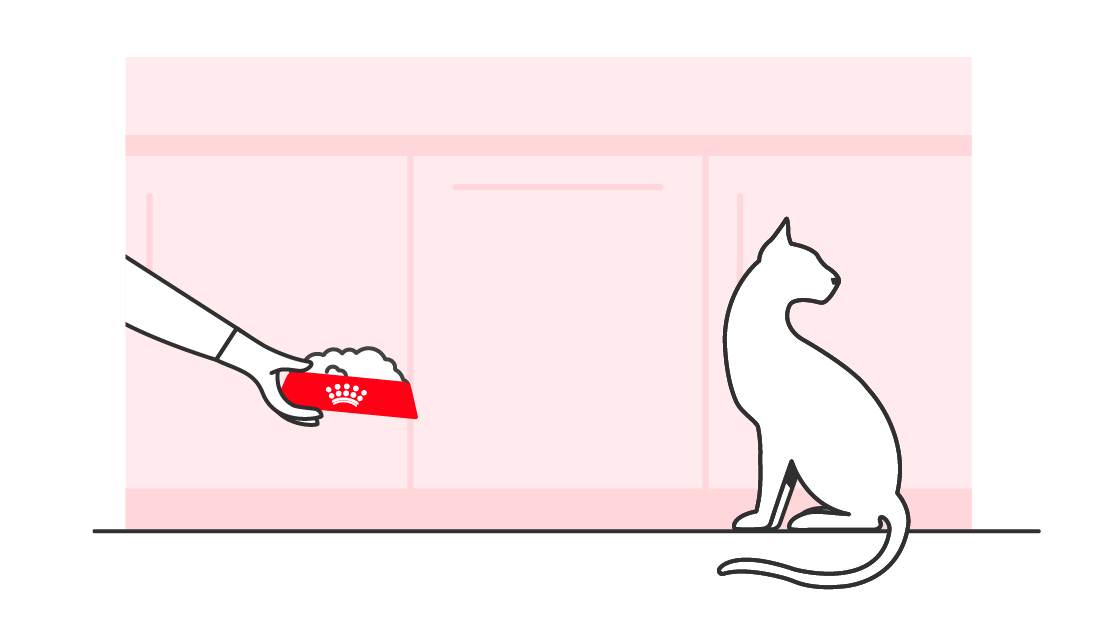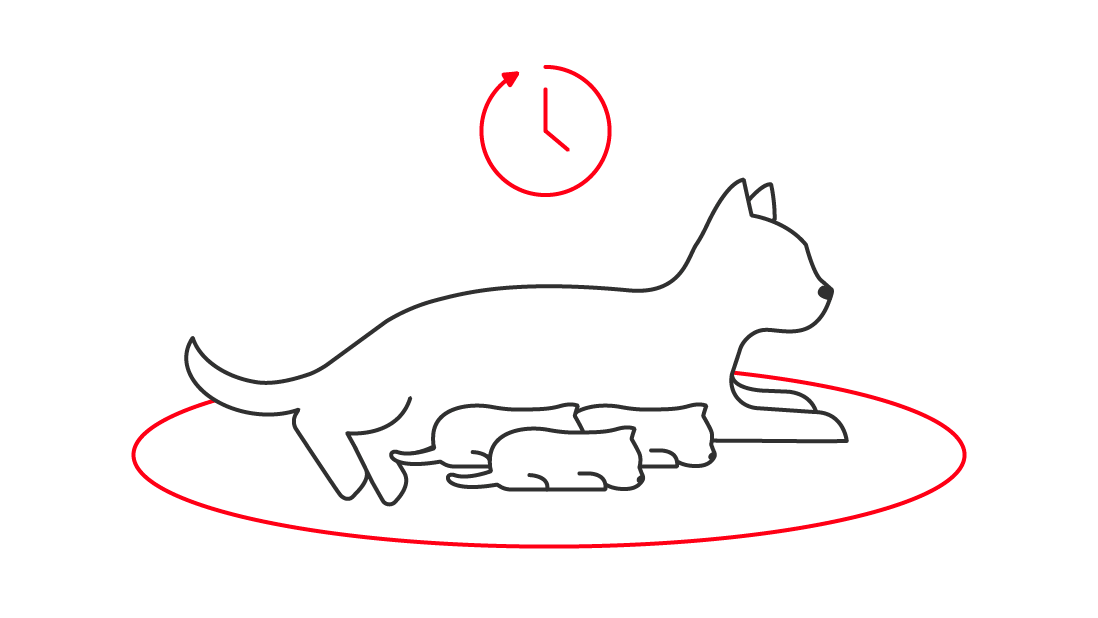How long are cats pregnant? and common questions answered
Article

Cats are prolific breeders, and as such many litters are unplanned. Queens can have up to three litters a year. If you find that your cat is gestating, it’s important to know some basic information to help ensure everything goes well.
From what age can cats get pregnant?
Cats reach puberty at the age of 4–12 months. Short-haired cats (Siamese, Abyssinian and others) mature earlier than others, by about six months. But long-haired cats, like Persians or Maine Coons, may not be fully developed until they are one year old. On average, the first oestrus occurs in the seventh month, after which a cat can become pregnant for the first time.
How long do cats stay pregnant?
The average gestation period for a domestic cat is usually around 65 days. During their gestation, the queen will continue to gain weight, as the embryos develop in the uterus. She will accumulate fat and nutrients in the body that will be useful in the last phase of gestation. In the remaining three to four weeks, the kittens development in the uterus focuses on weight-gain, giving the cat a more obvious belly.
How to tell if a cat is pregnant
There are a number of signs you might notice when a cat is pregnant. 2 or 3 weeks after fertilisation, the cat’s mammary glands become bigger and pinker, and the fur around them falls out. This can be a positive sign that your cat is pregnant.
Towards the 4th week, you may also notice her belly begin to swell, first of all behind the back ribs, then over the whole area. The size of her belly will depend on the size of the litter. In the case of a small litter, this change may be less prominent.

What should I do if my cat is expecting kittens?
If you think your cat might be pregnant, make an appointment with your vet to confirm the diagnosis. Abdominal palpation can be performed around the 3rd week. From day 22, an ultrasound scan can help to ascertain gestation and assess the kitten’s heartbeats. X-rays are the best way to determine the size of the litter. These can be performed from day 45, although it is preferable that this procedure only be carried out in the last weeks of pregnancy, when the bones of the foetuses have calcified.

How can I prepare for the delivery of kittens?
Two weeks before the estimated delivery date, the future mother should be isolated in a calm, peaceful room with a temperature of at least 22 or 23 °C.
The cat will need a birthing box which can be as simple as a plastic box, or disposable / washable absorbent material like paper towels. It may be a good idea to prepare two or three different nests because some mothers are very selective about where they give birth and may not like the first place chosen for them. Sometimes they give birth in cupboards or even dirty laundry baskets.
What happens when my cat goes into labour?
In the last two days of gestation, you may notice your cat’s behaviour start to change. She will show signs of anxiety; pacing, miaowing and, if it’s her first pregnancy, she may become “clingy” with you and may stop eating. When it is time to give birth, your cat will have frequent active abdominal contractions and a white-yellow discharge will appear.

How long does a cat give birth for?
A cat’s labour can last for anything from 2 to 15 hours, depending on the number of kittens and the size of both the cat and the newborns. If there are a lot of large kittens, and the cat herself is small, then labour may be prolonged. A two-hour interval after the first kitten is not unusual. If you're ever uncertain about the time between kittens, contact your vet who will be able to give further guidance.

How many kittens can a cat give birth to?
The average litter size is around 3–4 kittens, and anything above six is considered a large litter.
The more kittens a cat gives birth to, the less the individual kitten will weigh, and the overall gestational age (the length of time the foetus grows inside the uterus) decreases.
With large litters, it is even more important for the cat to provide a high-calorie diet to their litter. It may also be necessary to help feed the kittens in larger litters, as the mother may simply not have enough milk. In this case, a cat milk substitute such as Babycat Milk may be recommended by your vet.
What happens after the birth?
Immediately after giving birth, the cat should bite the umbilical cord of the kitten, free them from the membrane, and then begins to lick them. This stimulates the respiratory system of the newborn, after which it begins to search out the mother's nipples. If any of this doesn’t happen, you may need to assist.
The first feeding should begin as soon as possible to allow them to drink important colostrum, and the cat will spend the next two days licking the kittens and feeding them every 20 minutes.
How do I know if the birth has gone well?
You will know if the labour has been successful if:
If your cat's behaviour after giving birth causes you concern, or if any of these signs are present, you should contact your vet as soon as possible.
How does a cat care for kittens after birth?
Caring for kittens can be divided into several stages, depending on the level of their development.
For newborns, your cat will feed them, keep them warm, lick them, clean them and stimulate their bowel movements and urination. The next stage begins when the kittens eyes and ear canals open and their mobility improves, allowing them to become more independent. The mother, in addition to the above, will begin to teach kittens to go to the toilet in the tray, and regulate the activity of their games.
Next, the kittens will begin to consume solid food, and their mother will show them how to groom and socialise through games. By the age of 4 months, the kittens will become completely independent from their mother. Find out more about caring for kittens as they grow, and how to make sure they find suitable new homes, in our article, How to raise and re-home a litter of kittens.
If you have any questions about cat pregnancy or birthing a litter at home, it's always best to speak to your vet or a pet-care professional for advice. To avoid unexpected litters in the future, your vet will also be able to give you advice on the benefits of neutering.
A healthy start to life
Tailored nutrition for your kitten
Like & share this page